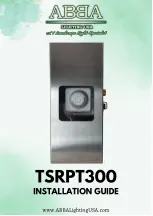
9
2.3
Before You Begin
2.3.1 Site Preparation
Each ECLIPSE transmitter is built to match the specific
physical specifications of the required installation. Make
sure the probe connection is correct for the threaded or
flanged mounting on the vessel or tank where the transmit-
ter will be placed. See Mounting, Section 2.4.
Make sure that the wiring between the power supply and
ECLIPSE transmitter are complete and correct for the type
of installation. See Specifications, Section 3.6.
When installing the ECLIPSE transmitter in a general purpose
or hazardous area, all local, state, and federal regulations and
guidelines must be observed. See Wiring, Section 2.5.
2.3.2 Equipment and Tools
No special equipment or tools are required to install the
ECLIPSE transmitter. The following items are recommended:
• Open-end wrenches or adjustable wrench to fit the process
connection size and type. Coaxial probe 1
1
⁄
2
" (38 mm), twin
rod probe 1
7
⁄
8
" (47 mm), transmitter 1
1
⁄
2
" (38 mm). A torque
wrench is highly desirable.
• Flat-blade screwdriver
• Digital multimeter or digital volt/ammeter
• 24 VDC power supply, 23 mA
2.3.3 Operational Considerations
Operating specifications vary based on Probe model
number. See Specifications, Section 3.6.
2.4
Mounting
The ECLIPSE transmitter can be mounted to a tank using
a variety of process connections. Generally, either a threaded
or flanged connection is used. For information about the
sizes and types of connections available, see Probe Model
Numbers, Section 3.7.2.
NOTE: Do not place insulating material around any part of the
ECLIPSE transmitter as this may cause excessive heat buildup.
Make sure all mounting connections are properly in place
on the tank before installing the probe. Compare the name-
plate on the probe and transmitter with the product infor-
mation; make sure the ECLIPSE probe is correct for the
intended installation.
57-600 Eclipse
®
Guided Wave Radar Transmitter










































